SEOUL, South Korea — When visiting South Korea, exploring its capital Seoul often comes to the top of mind.
After all, the city has everything — from shopping, food, and sights. Not to mention the tons of exclusive and limited edition Korean pop (K-pop) merchandise for avid fans.
When I had the opportunity to visit South Korea for the first time, I knew Seoul would be at the heart of my itinerary.
READ MORE:
George Town, Penang: A feast for the eyes and soul
The Chiang Mai experience: Up close with the gentle giants
But as I dug deeper into the country’s history and culture, I found myself wanting to explore and learn more about it beyond the confines of the capital.
And it was worth it.
Gyeongju: The Museum Without Walls
South Korea is home to what was once the 4th largest city in the world in ancient times, Gyeongju.
Also known as Seorabeol, which means capital in English, it served as the capital of the Silla Kingdom during Korea’s Three Kingdom period, even when all three kingdoms became united in what Koreans referred to as the ‘Unified Silla Period’.
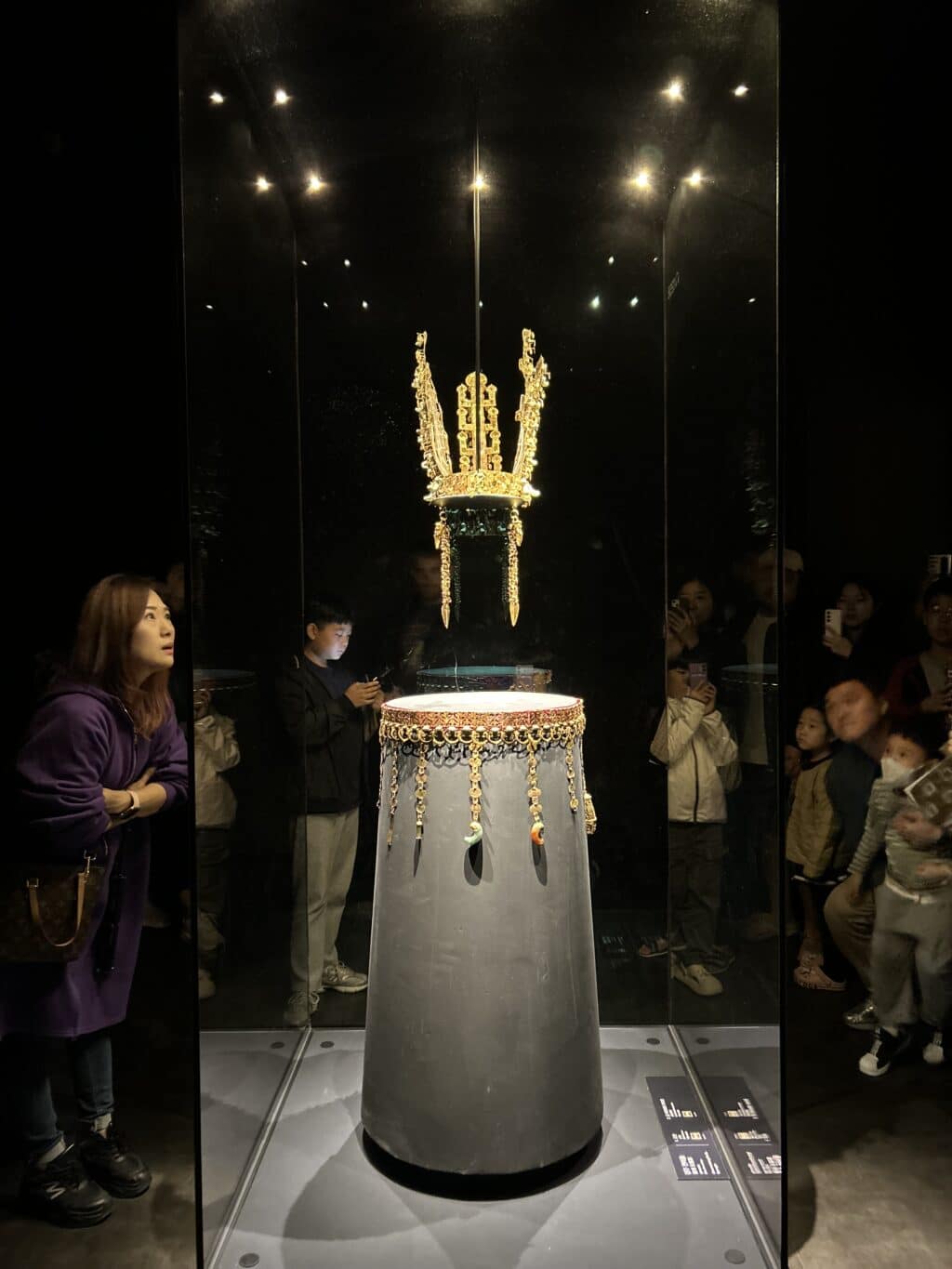
Museumgoers staring at a golden Silla Crown displayed at the Gyeongju National Museum. It was one of the several crowns excavated from Gyeongju City. The Silla Kingdom is known for its extensive use of gold, especially in symbolizing authority. | Photo by Morexette Marie Erram
Historians regarded Gyeongju as an important site not only for the hundreds of cultural properties and historical treasures found there. But also, it became one of the major hubs for the Silk Road, the famous network of Euroasian trade routes that connected the East and the West.
Gyeongju – or Seorabeol in this case – enabled the South Korean peninsula to participate in various trades around the world, with merchants, monks and envoys visiting this city by land or by sea.
But one of the most distinct characteristics of Gyeongju is the influence of Buddhism.
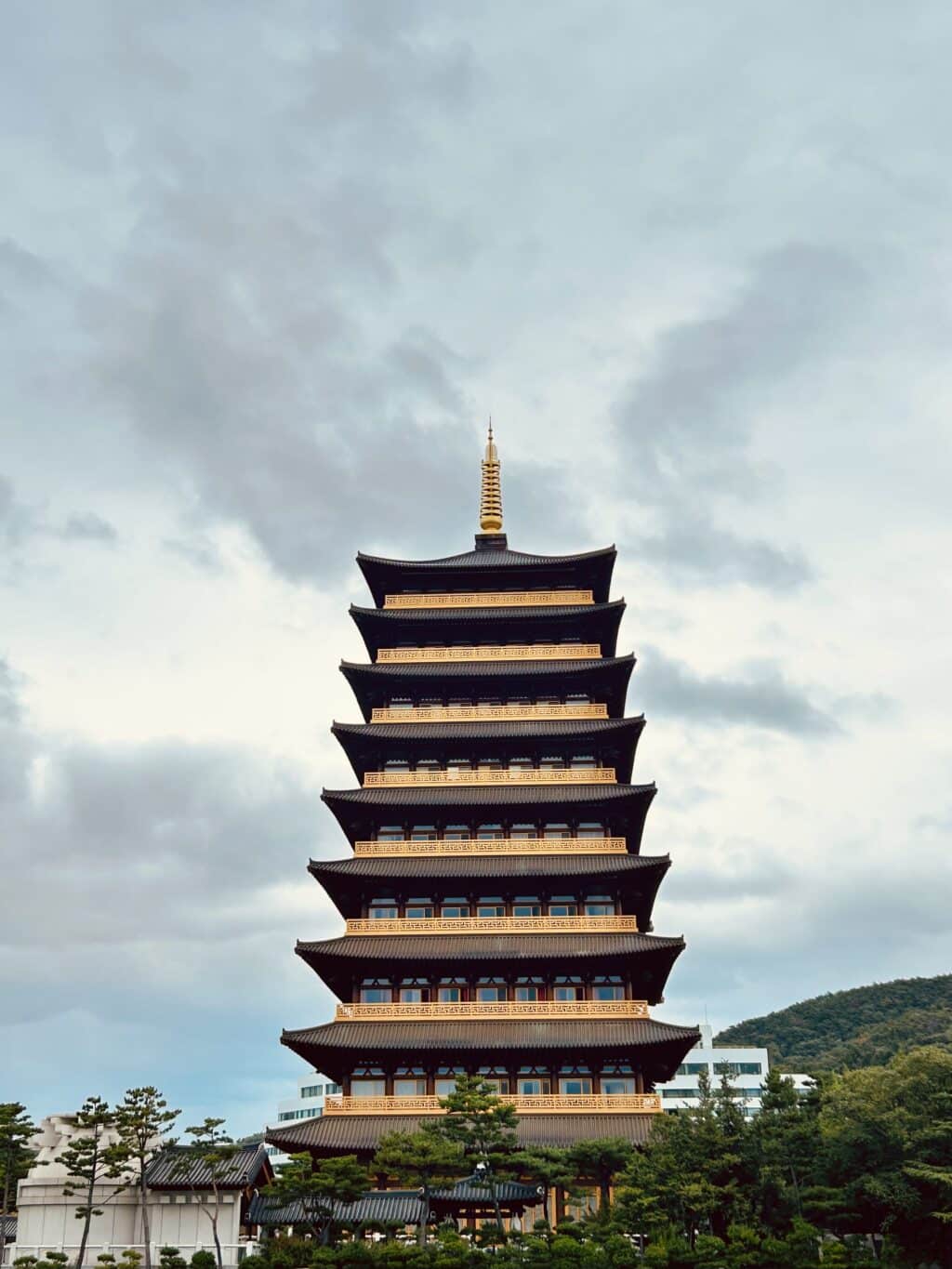
The Silla Kingdom is known for helping spread Buddhism in the peninsula and here in Gyeongju, visitors can see up close real artifacts and works of Korean Buddhism. Like the Bulguksa, a temple complex built in the 8th century which was declared a UNESCO World Heritage Site.
Owing to its rich history, and the thousands of artifacts, archeological sites and heritage properties scattered around the city, UNESCO described Gyeongju as the ‘museum without walls.’
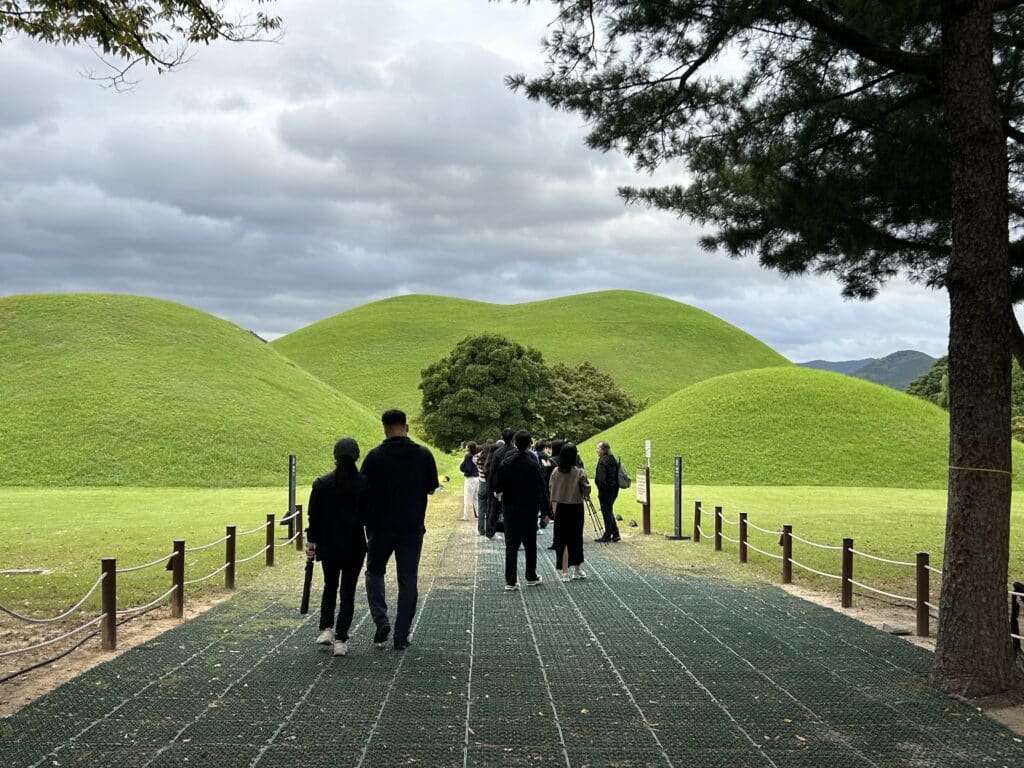
The Daereungwon Ancient Tomb Complex in Gyeongju City where some members of the royal family, and other notable figures of the Silla Kingdom are buried. | Photo by Morexette Marie Erram
From the tombs of the royal families in the Korean Peninsula — including that of Queen Seondeok — to one of the oldest observatories in Asia.
Some of the most iconic landmarks in the city were also rebuilt and restored to its former glory like the Woljeonggyo Bridge, which was burned down during the Joseon Dynasty.
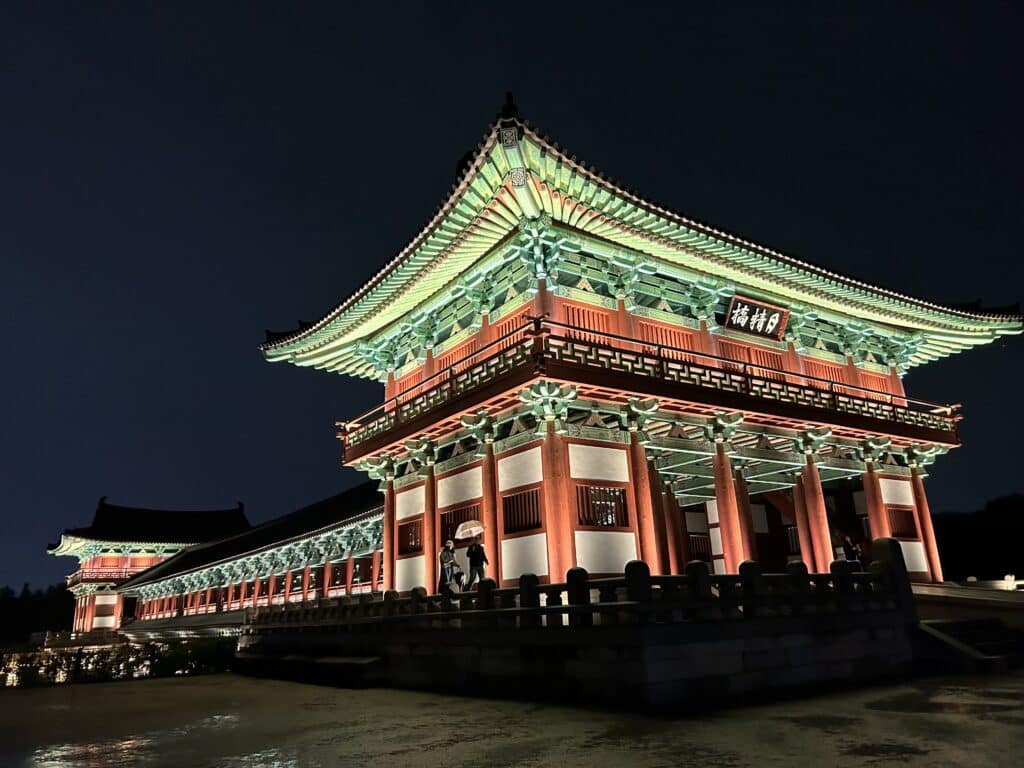
The Woljeonggyo Bridge in Gyeongju City, South Korea’s largest wooden bridge, at night. | Photo by Morexette Marie Erram
Today, the Woljeonggyo Bridge is South Korea’s largest wooden bridge, and attracts thousands of tourists, day and night.
Busan’s storied Milmyeon noodles
Around 80 kilometers south of Gyeongju lies the city of Busan, the second largest city in South Korea.
Busan may be well known today for its scenic beach – with the city skyline as its backdrop and the picturesque cliffs by the coast. But this bustling metropolis has a lot to offer.
Busan was also part of the Greater Silla Kingdom before so it won’t come as a surprise for those coming from Gyeongju to see tourists and devotees alike flocking to Buddhist temples in this city.
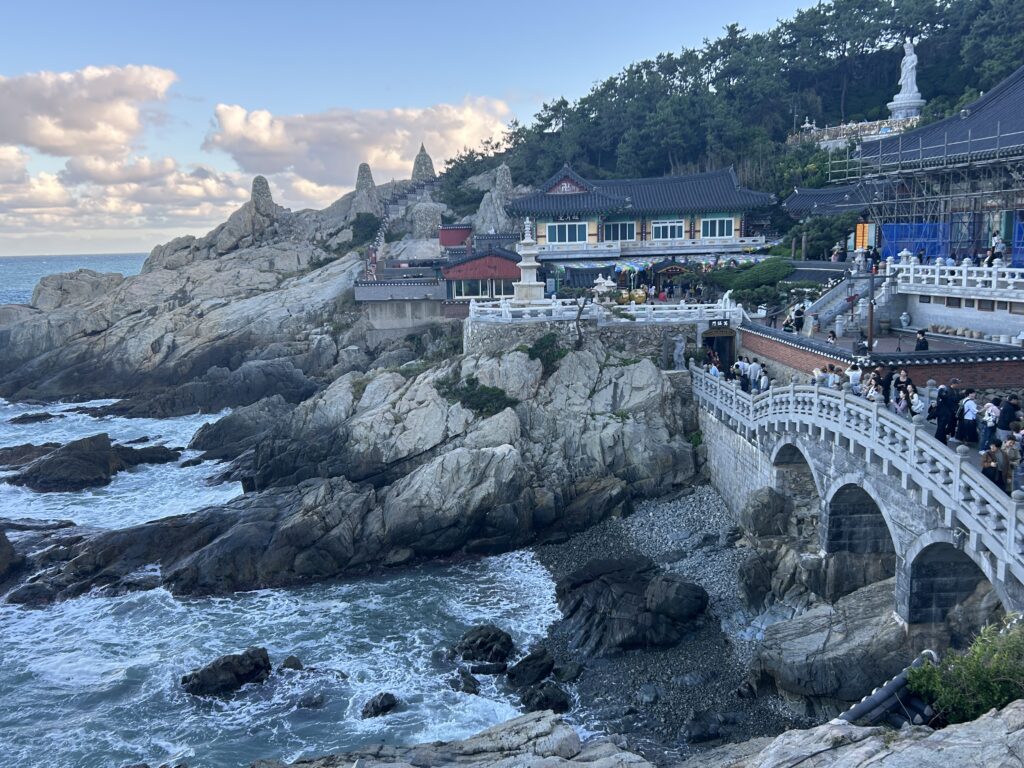
A cliff-side view of the Haedong Yonggungsa Temple near Haeundae Beach in Busan, South Korea. | Photo by Morexette Marie Erram
It is in Busan one can find what many described as the ‘most beautiful temple in Korea’ – the Haedong Yonggungsa. And it is one of the fewest temples in Korea built by the sea.
It is also in Busan where one can find South Korea’s largest fish market, the Jagalchi market, where vendors offer the freshest seafood catch to be cooked right inside the market.
Some of the famous delicacies found in Jagalchi Market are the famous king crab and snow crab, and raw, live octopus.
Aside from the sea’s bounty, Busan’s storied past led me to meet the milmyeon noodles.
During the height of the Korean War, a lot of citizens from present-day North Korea fled to the south – particularly in this coastal city.
Milmyeon is a variant of North Korea’s naengmyeon noodles, which are made from buckwheat flour and soaked in cold meat broth.
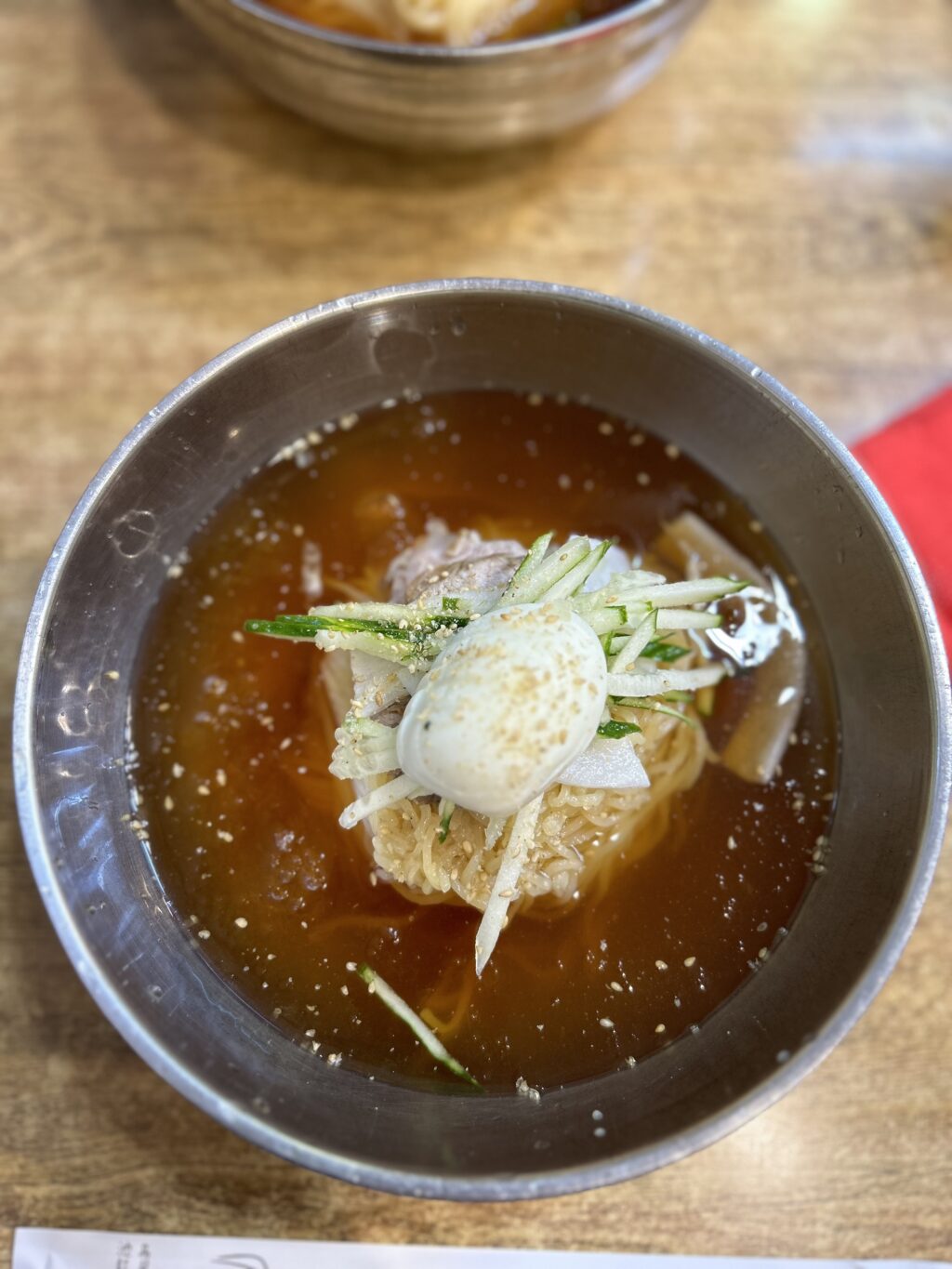
A bowl of milmyeon noodles, a variant of North Korea’s naengmyeon noodles. Milmyeon is a specialty in Busan, South Korea. | Photo by Morexette Marie Erram
But at that time, buckwheat was scarce so war refugees instead used the wheat flour being rationed by the U.S. Army as substitute. So Milmyeon noodles was born.
Milmyeon is usually eaten during the hot summers in Korea, with cold broth providing a refreshing respite from the heat, but it has become one of the most sought out dishes in Busan that anyone can eat anywhere and anytime.
Gyodong Island
In many parts of the world, the Cold War may have ended.
The Berlin Wall, the infamous wall border that divided the German capital between capitalists West Germany and communist East Germany, was demolished more than three decades ago.
But in the Korean peninsula, the fallout of the Cold War rages on.
While there is no huge concrete slab standing on the borders of South and North Korea, the dozens of soldiers patrolling the kilometers-long boundary, wired fences, and towering military outposts made it clear – even to tourists – that a wall existed.
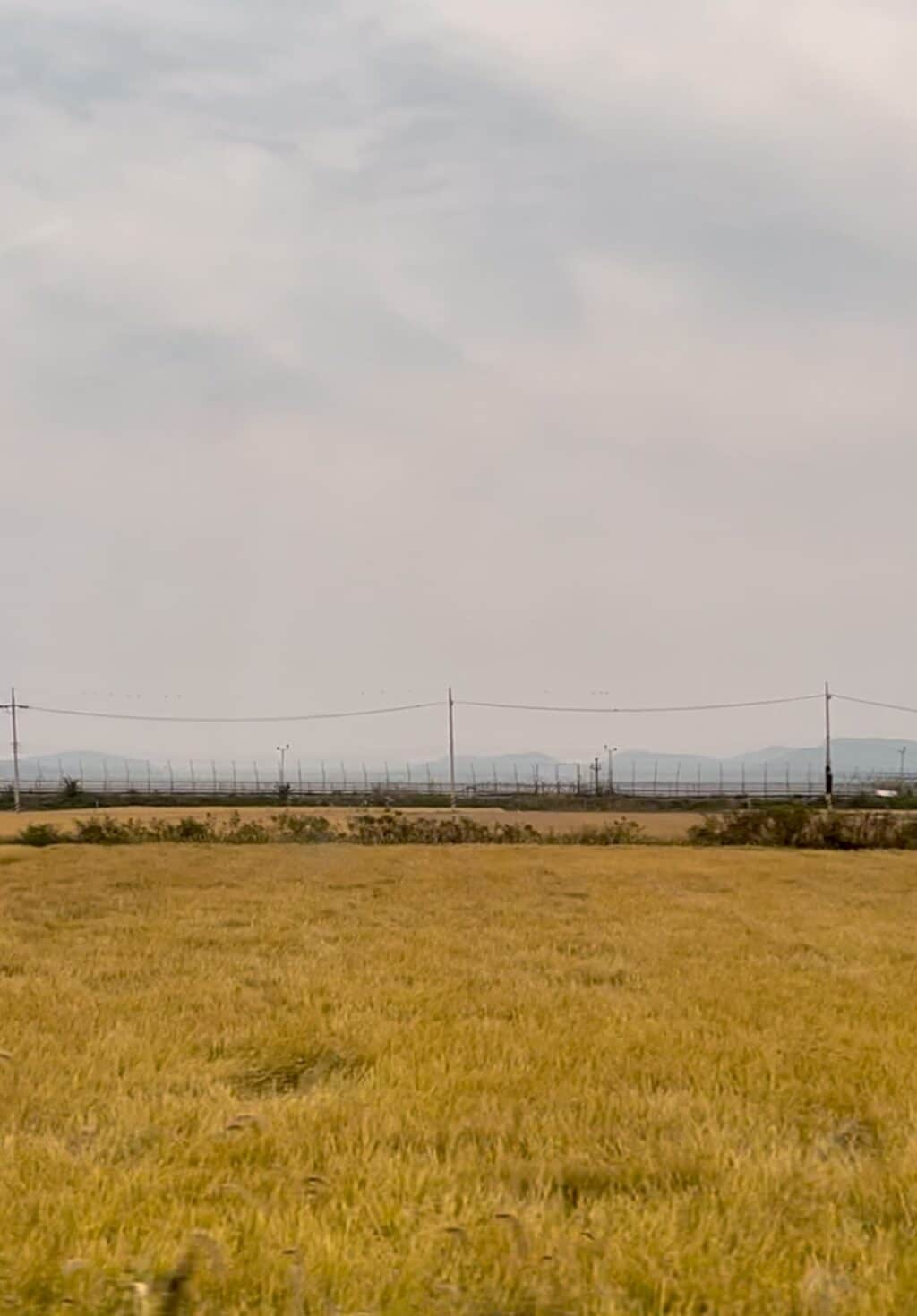
Tall barbed-wire fences circle this coastal portion of Ganghwa Island near the 38th Parallel in South Korea. | Photo by Morexette Marie Erram
And anyone who tried to cross it may face grave consequences, including death.
We all know about the Demilitarized Zone or DMZ. Also known as the 38th Parallel. The border between South and North Korea. A stalemate between warring superpowers during the Cold War that no one, particularly ordinary Koreans, expected to last nearly eight decades.
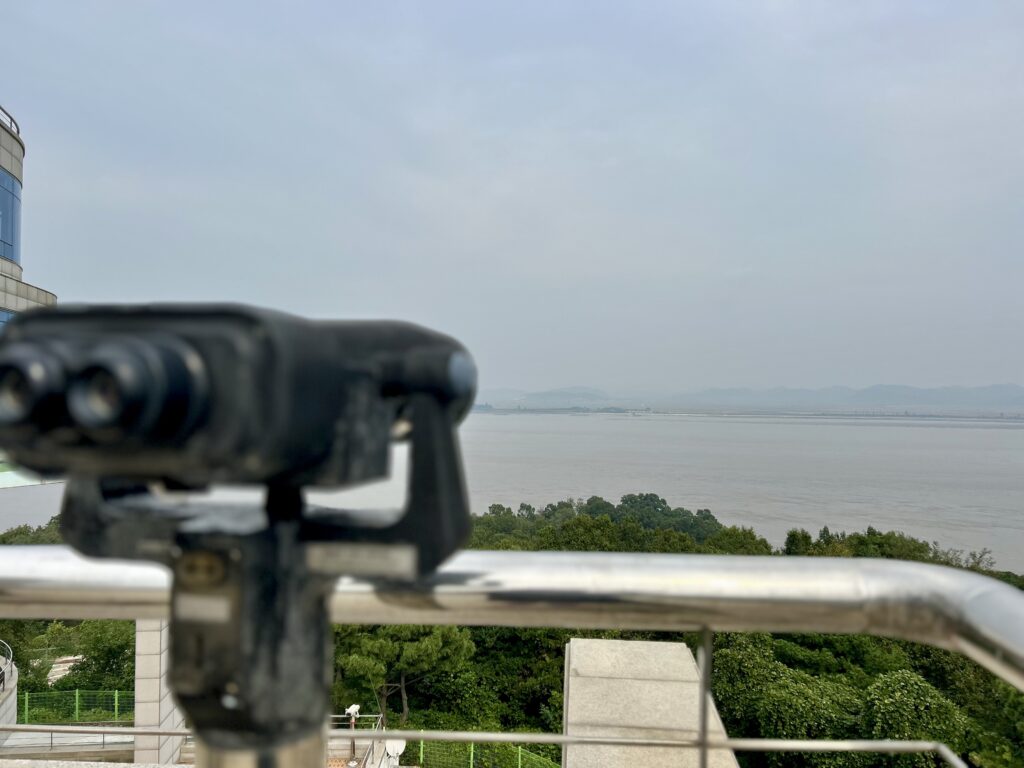
A pair of powerful binoculars in Ganghwa Peace Observatory, a mixed civilian and military facility located at Ganghwa Island in South Korea. The site stands approximately 3 kilometers away from the coasts of North Korea. With the binoculars, visitors can see villages and people in North Korea from afar. | Photo by Morexette Marie Erram
Popular culture often depict the DMZ as terrifying, with the presence of checkpoints, gun-toting soldiers and high, prison-like fences.
But it’s also a sad and heartbreaking reality about the impact of war on ordinary people.
A trip to the northwestern tip of South Korea, one can find Gyodong Island which locals described as the ‘loneliest and saddest island’ in the country.
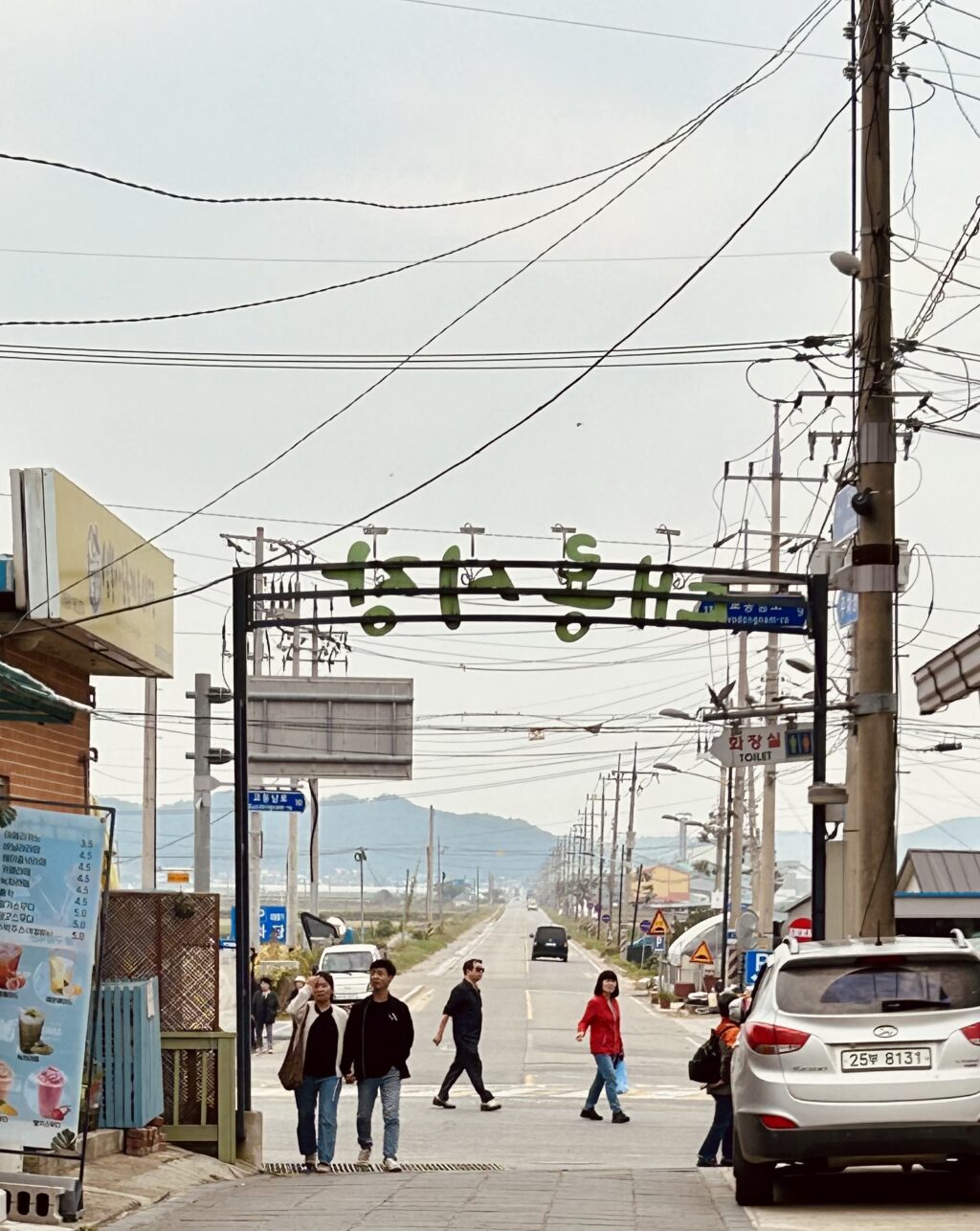
One of the entrances leading to Daeryong Market in Gyodong Island | Photo by Morexette Marie Erram
Here, the old and frail continue to cling on to the hope that they can return to their loved ones after fleeing North Korea during the Korean War — thinking that it might be over soon, only to find themselves unable to return home for years.
READ MORE
Ukraine video allegedly shows North Korean troops in Russia
South Korea warns Russia: It can also send arms to Ukraine
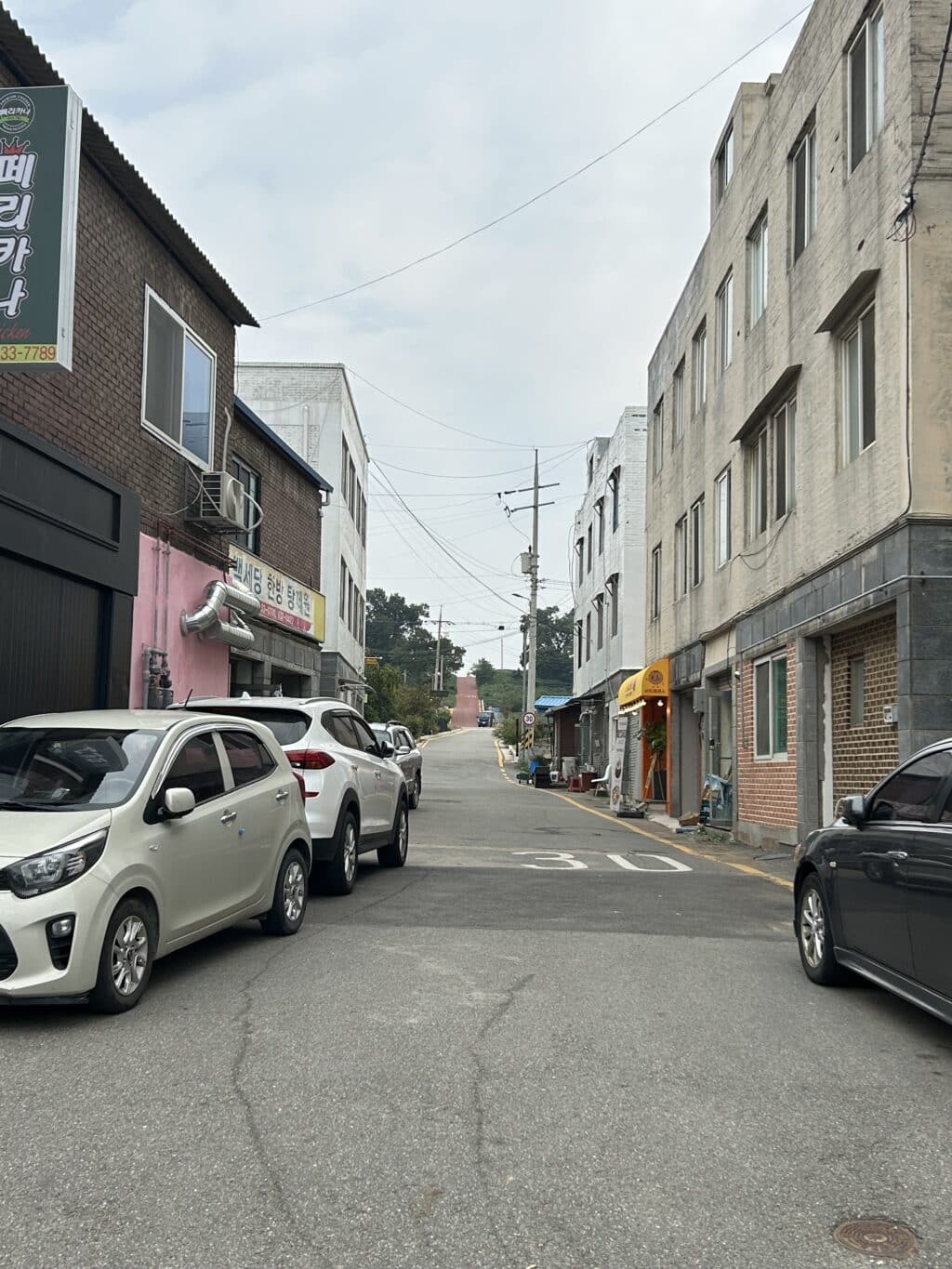
A street near Daeryong Market in Gyodong Island. | Photo by Morexette Marie Erram
Gyodong Island is connected by a single bridge to Ganghwa Island, which is located closer to mainland South Korea.

Bibim-naengmyeon, a variant of North Korea’s naengmyeon noodles, sold in a local restaurant in Gyodong Island. Naengmyeon noodles are made from buckwheat instead of wheat, and usually mixed with either potatoes or sweet potatoes. They are known for being chewy and thin. | Photo by Morexette Marie Erram
Ganghwa Island
In Ganghwa stood the Ganghwa Peace Observatory, a mixed civilian and military facility that allows visitors – including foreign tourists – to take a peek on the nearest North Korean villages. It felt surreal, similar to spying on what your neighbors have been up to.
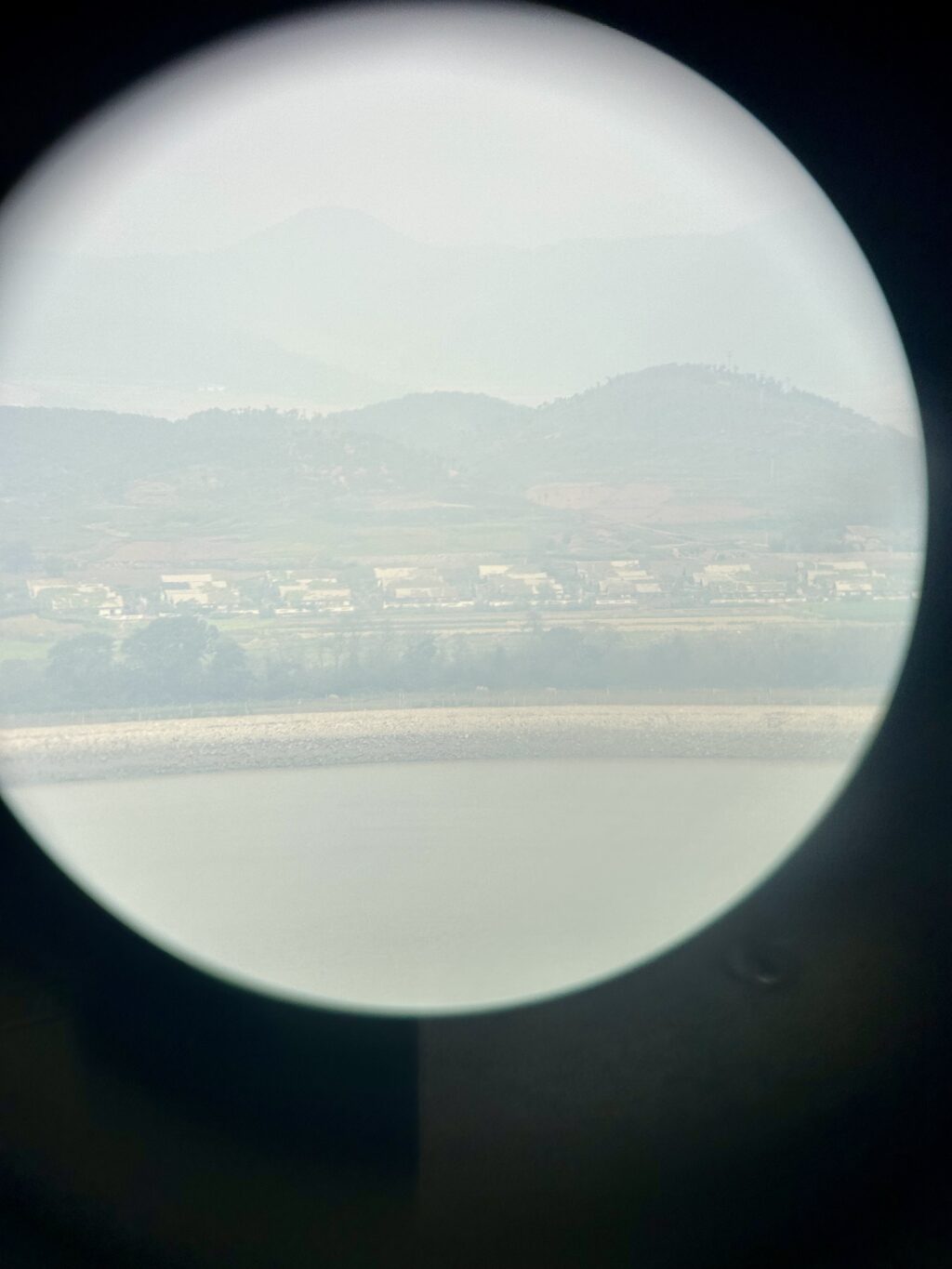
A peek into North Korea: Housing complex and apartments in a coastal village in North Korea can be seen through the binoculars at the Ganghwa Peace Observatory in Ganghwa Island, Incheon, South Korea. | Photo by Morexette Marie Erram
As a tourist and outsider, a trip to Korea’s DMZ was more of a sobering and grounded experience as it serves as a reminder of the devastation that immediately follows during war.
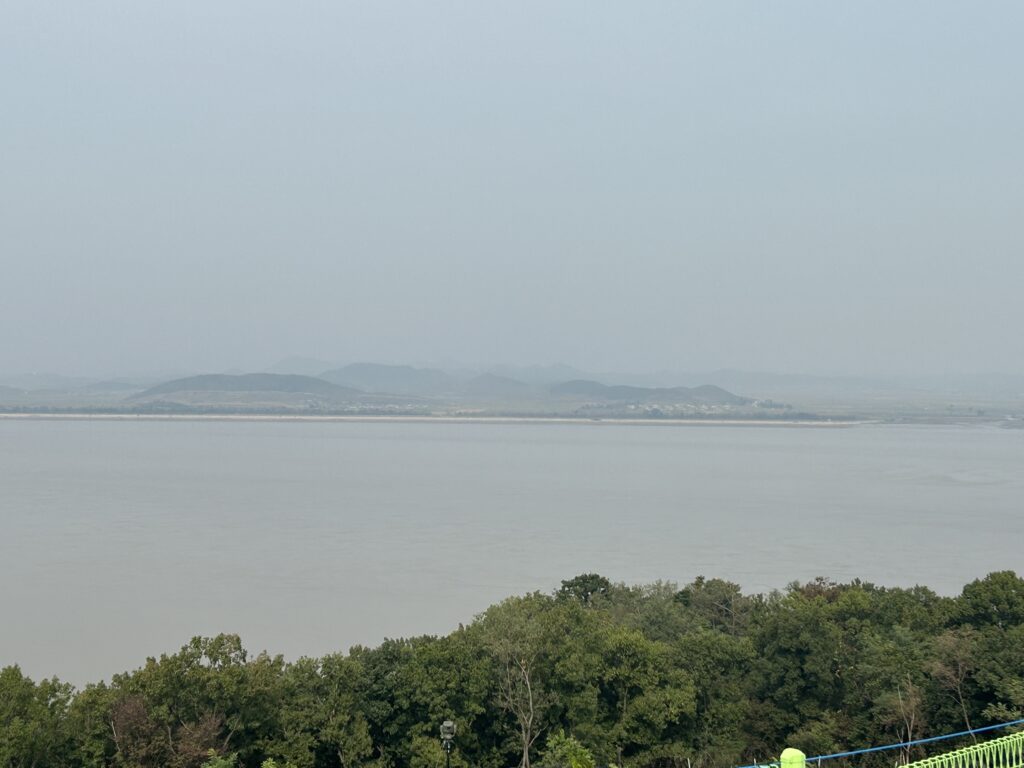
Foreground: South Korea | Middleground: Hangang River | Background: North Korea
Getting around South Korea
For first-time travelers in South Korea who had the time — and more-than-enough budget to roam around the country for a week or more — getting the Korail Pass is your key in unlocking destinations outside Seoul.
It’s a ticket granting foreigners special use to Korail Corporation’s expansive network of trains, including the famous KTX – Korea’s bullet trains.
Meanwhile, the Mactan-Cebu International Airport (MCIA) currently serves multiple direct flights from Cebu to Incheon International Airport, the major gateway in South Korea.



